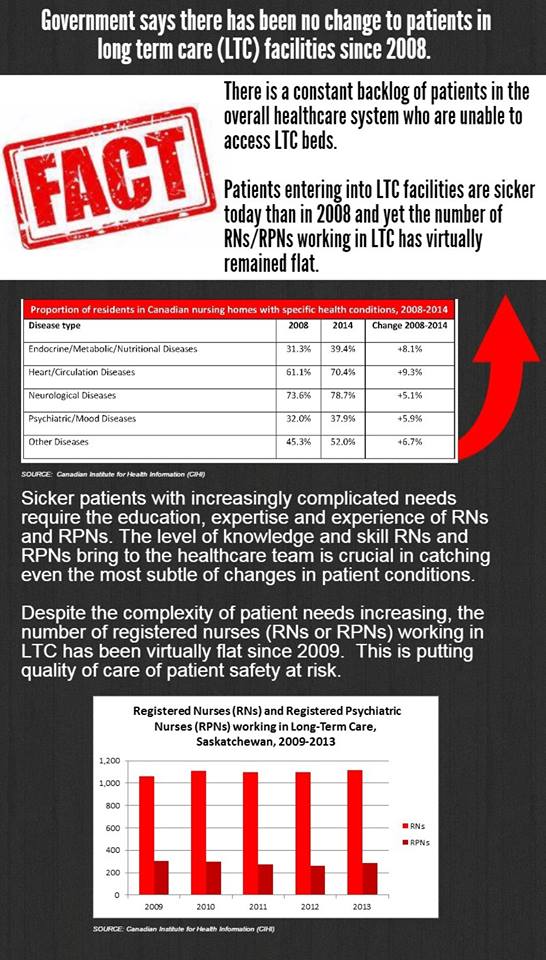Wednesday’s release of the Saskatchewan Ombudsman report on Margaret Walholm’s care at the Santa Maria Senior Citizen’s Home highlights how much work needs to happen in order to improve the quality of long term care in our province. The report clearly acknowledges that the entire long term care system in Saskatchewan is “under strain.”
I know this tragedy hits home for many SUN members, especially those working in long term care. Going into work every day with a terrible, gut-wrenching feeling that you may not be able to dedicate the time you need to all of your patients because there are just too many of them to care for at one time can be incredibly disheartening.
The healthcare needs of Saskatchewan’s long term care patients have grown substantially over the years, and this is placing persistently increasing demands on both the system and care providers. Patients entering long term care are sicker than ever – nowadays a typical patient enters the system with multiple illnesses and diagnoses, and they are often very frail and require an extremely high level of nursing care and expertise. To compound this problem, our population is both growing and getting older, meaning more people are in need of long term care than ever before. Saskatchewan simply isn’t keeping up with these new realities.
The ombudsman’s finding that Santa Maria only has “one [registered] nurse working nights for the entire building – covering three floors and 147 residents” – is frankly scary. Sadly however, this is a harsh truth most SUN members working in long term care in the province can attest to. Chronic short-staffing is a systemic issue and Santa Maria is unfortunately only one of many facilities currently operating like this. When a single registered nurse is responsible for close to 150 patients at one time, both the quality of care and safety of residents is compromised. Patients, families and staff are being severely failed in situations like these.
The results of the 2015 Annual SUN Membership Survey reinforce the need for better registered nurse staffing. With three in four of Saskatchewan’s almost 10,000 registered nurses saying they are aware of times where patients have been put at risk due to inadequate staffing levels, and one third saying this happens frequently, it is clear things have got to change.
Recommendations by the ombudsman for the Ministry of Health and Health Regions to “look more closely at the long term care system and ask themselves questions” such as: “What are the care needs of current and future long-term care residents in Saskatchewan?” and “What is a suitable staff mix?” make sense.
Government and employers are being advised to look at not only staff levels but at team makeups to ensure patients are receiving direct care from the right provider at the right time.
Many still hold the misconception that long term care is merely an extension of home life. This is no longer the case. These facilities are institutions where highly trained professionals are employed to care for patients with extremely high care needs. Now more than ever we need to be looking at staffing strategies that will help us safely meet these evolving needs. It’s not just a question of more care providers, it’s also ensuring we always have the right care providers.
Only time will tell what changes will emerge from this report. We can only hope that government and health regions will take the recommendations to heart, and that long term care residents and their families will start to see tangible changes happening in the near future.
As registered nurses I challenge you never to give up. Never stop advocating for your patients. We are all being called upon to make things right in long term care – residents and their families across the province are counting on us.
In solidarity,
Tracy Zambory RN
President, Saskatchewan Union of Nurses




